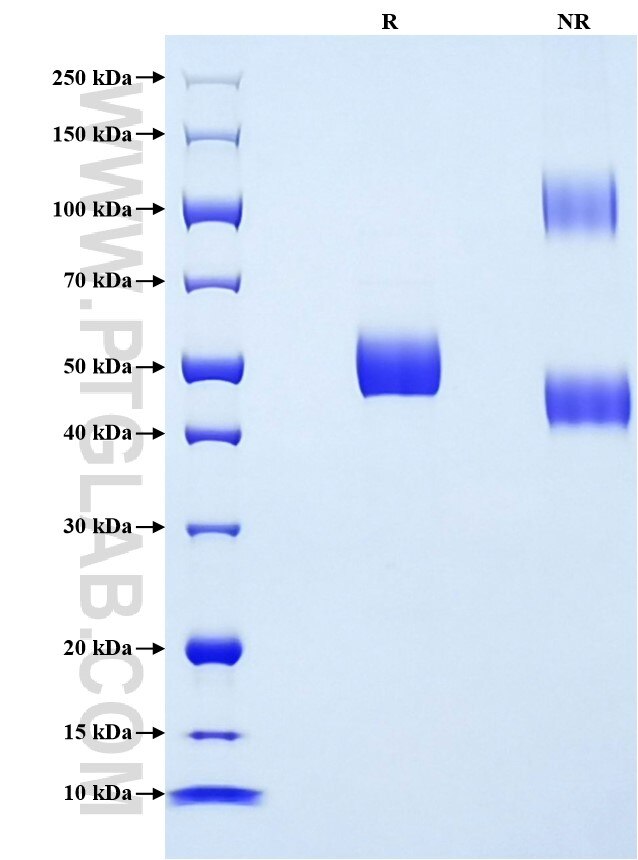Recombinant Rat CD8A protein (rFc Tag)
Species
Rat
Purity
>90 %, SDS-PAGE
Tag
rFc Tag
Activity
not tested
Cat no : Eg3839
Validation Data Gallery
Product Information
| Purity | >90 %, SDS-PAGE |
| Endotoxin | <0.1 EU/μg protein, LAL method |
| Activity |
Not tested |
| Expression | HEK293-derived Rat CD8A protein Gln27-Tyr189 (Accession# P07725) with a rabbit IgG Fc tag at the C-terminus. |
| GeneID | 24930 |
| Accession | P07725 |
| PredictedSize | 44.3 kDa |
| SDS-PAGE | 48-55 kDa, reducing (R) conditions |
| Formulation | Lyophilized from 0.22 μm filtered solution in PBS, pH 7.4. Normally 5% trehalose and 5% mannitol are added as protectants before lyophilization. |
| Reconstitution | Briefly centrifuge the tube before opening. Reconstitute at 0.1-0.5 mg/mL in sterile water. |
| Storage Conditions |
It is recommended that the protein be aliquoted for optimal storage. Avoid repeated freeze-thaw cycles.
|
| Shipping | The product is shipped at ambient temperature. Upon receipt, store it immediately at the recommended temperature. |
Background
CD8A, a member of the immunoglobulin superfamily, is primarily responsible for cell-mediated immune defense and T-cell development. CD8A, as an important member of the T-cytotoxicity pathway-associated genes, may be a useful biomarker of immunotherapeutic response and immune-cell infiltration, and has been widely reported to be a potential prognostic and diagnostic marker for a variety of disorders (e.g., inflammatory disorders and tumors). Studies have shown that CD8A expression is highly correlated with tumor mutational load, key immune checkpoint genes, and several types of tumor-infiltrating immune cells, predicting effective response to immunotherapy. Recent studies suggest that CD8A may be a potential prognostic marker for triple negative breast cancer (TNBC) and may also play a role in breast cancer (BC) metastasis.
References:
1. Zheng Z, et al. (2022) Cancers (Basel). 14(19):4866. 2. Chu J, et al. (2024) Front Biosci (Landmark Ed). 29(2):73. 3. Du Y, et al. (2023) J Inflamm Res. 16:1653-1669.
